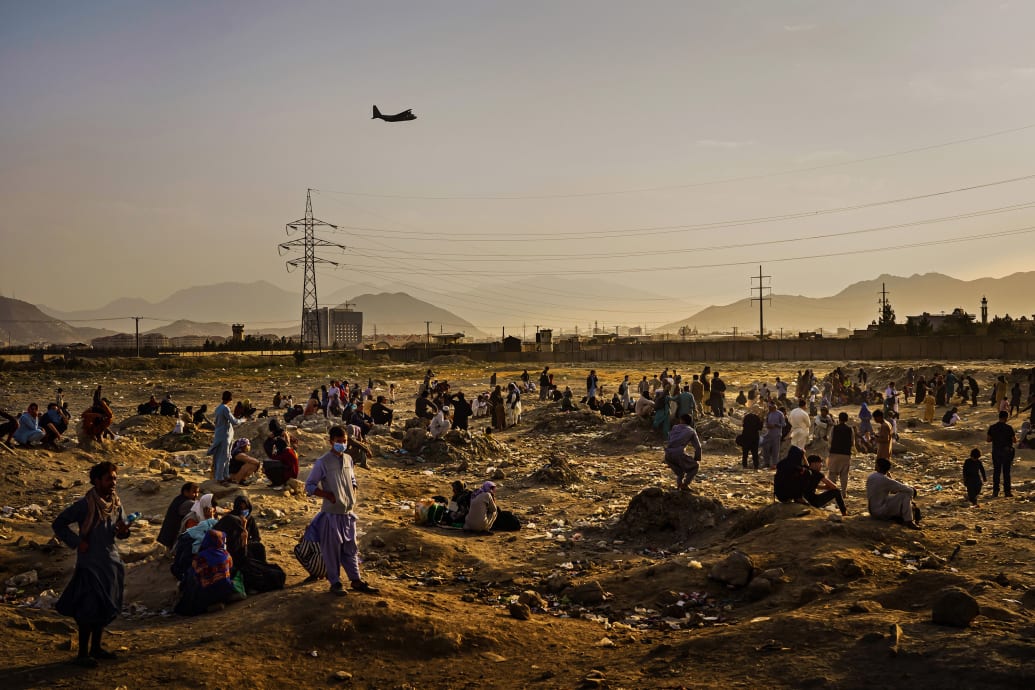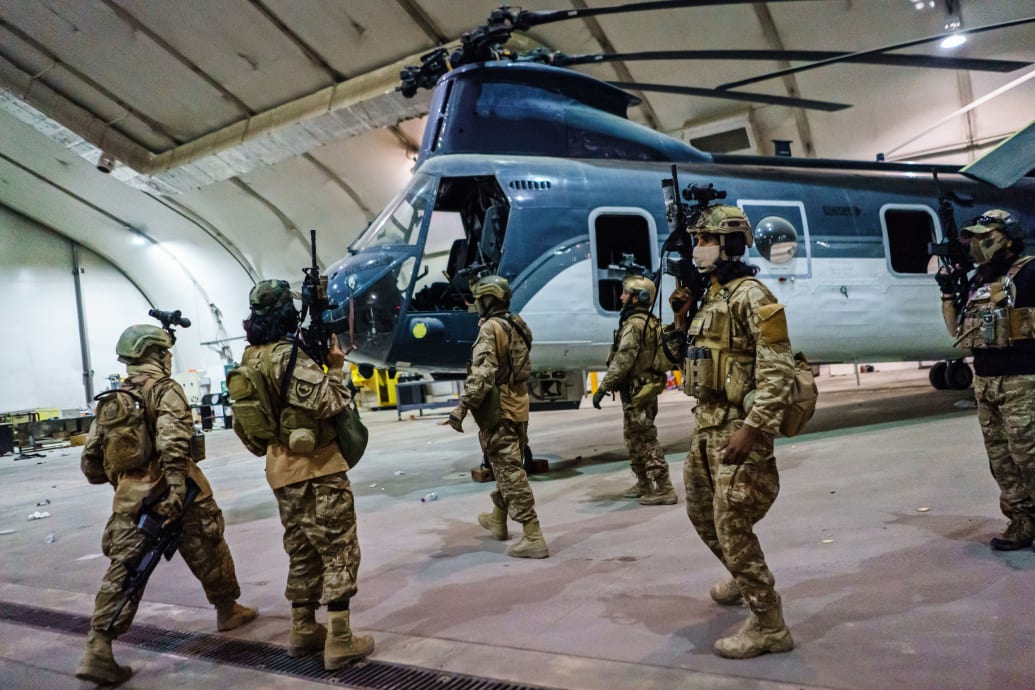It is rare to find high officials in Washington, D.C. who will admit an error.
Some are pathologically opposed to acknowledging their weaknesses, like former President Donald Trump, who former White House Chief of Staff John Kelly said couldn’t admit errors because “his manhood is at issue.”
Kelly, however, also noted at the time he made that comment that the best leaders do have the ability to acknowledge when they were wrong.
On Friday, the State Department issued its “After Action Review on Afghanistan.” It stands out because it offers an unflinching self-critique of the errors associated with the Biden administration’s efforts to end America’s longest war.
What is more, it cites specific ways that the department has learned from that experience, and steps taken that have already (according to a senior State Department official with whom I spoke) been applied successfully in crisis environments from Ukraine to Africa.
According to that official, the review was undertaken at the direction of Secretary of State Blinken, “a leader who understood the State Department and its shortcomings and who was very intentional about enabling us to find a way to be better prepared in the future for handling crisis situations” like that experienced in Afghanistan.
“…the report also candidly assesses missteps made by the department and the U.S. government as the mission to end the war unfolded.”
Ambassador Daniel Smith, one of the highest-ranking members of the foreign service, led the investigation. The report cites a variety of factors as leading to the chaos that surrounded the departure from Afghanistan.
Among these factors (many of which were outside the control of the officials left to oversee the departure) were the difficulties associated with winding a 20-year operation down in a matter of weeks, to the impact of the COVID pandemic on State Department operations, and from the difficulty of getting senior officials confirmed by the Senate to the sudden collapse of the Afghan government.
But the report also candidly assesses missteps made by the department and the U.S. government as the mission to end the war unfolded.
Perhaps foremost among these is the first of the findings cited in the report: the conclusion that during both the Trump and Biden administrations “there was insufficient senior-level consideration of worst case scenarios and how quickly those might follow.”
Taliban fighters storm into the Kabul International Airport.
Marcus Yam/Los Angeles Times via Getty
Inadequate preparation for the pressure that military withdrawal would place on State Department personnel was another area cited as a cause for the problems that occurred. Also cited were inadequate planning and an absent inter-agency process during the Trump administration—especially failures to plan for the needs of those eligible for the Special Immigrant Visa (SIV) program. Inadequate consideration of the consequences of handing Bagram Air Base over to the Afghans was also acknowledged as contributing to the difficulties experienced during the last months and weeks of U.S. involvement in that country.
The findings emphasized that “While predictions varied, up until almost the time Kabul fell, most estimates were that the Afghan government and its forces could hold the city for weeks, if not months.” Once the worst happened on that front, problems were compounded by the fact that “it was unclear who in the Department had the lead.”
As to the fate of at-risk Afghan nationals, the report asserts, senior officials had not made clear decisions regarding the universe of “at-risk Afghans who would be included” in evacuation efforts. Concerns about taking actions that might appear to undermine the Ghani government are also cited in the report as reasons planning and communications with those at risk were inhibited.
The report repeatedly cites the heroic performance of the State Department officials who remained on the ground in Afghanistan and, of course, notes the remarkable success achieved by the airlift which, in a matter of two weeks, resulted in 125,000 people being flown out of the country.
But it also critiques the department for failing to “establish a broader task force” to address the situation, which it asserts would “have brought key players to address issues related to” the evacuation process. The report further states that naming a high-level official to oversee the crisis response would have been useful.
In the final phases of the operation, the report states, the department was overwhelmed by calls from those in need on the ground, and others acting on their behalf or seeking information on the state of play with the pullout. “The Department proved unable to buffer those on the ground in Kabul from receiving multiple, direct calls and messages from current or former senior officials, members of Congress” and others seeking “and in some cases demanding” that they provide special assistance to individuals at risk.
Finally, the report contends that the State Department “has no systematic process to debrief task force and other crisis response staff promptly after a crisis,” or to otherwise care for those negatively affected by the stresses and strains of handling such a demanding situation.
The senior State Department official with whom I spoke stated that in response to these findings, the department had implemented a broad series of changes. These include “more dynamic, pro-active management of risk in uncertain environments.” This resulted, the official said, in much more effective contingency planning in Ukraine and for operations in Africa both at the policy level (including red-teaming, which is a systematic effort to challenge and test assumptions, and consideration of multiple scenarios), and at the operations level among security staff to better prepare for all eventualities.
The official also cited the use of available technologies to better handle information flow to U.S. citizens and other parties at risk in crisis situations, developing a better “standing capability to manage crisis situations” across the workforce at State, and programs to take better care of our people during and following a crisis.

A military transport plane departs as Afghans hoping to leave the country wait outside the Kabul airport on Aug. 23, 2021.
Marcus Yam/Los Angeles Times via Getty
The official specifically cited how careful analysis of multiple scenarios played a role in departmental and U.S. government deliberations as recently as the mutiny of Wagner mercenaries led by Yevgeny Prigozhin in Russia a week ago.
The specific recommendations cited in the plan include strengthening State’s “overall crisis preparedness and response capabilities.” Also cited was the need to insulate efforts to prepare for crises from policy concerns. In addition, it was advised that efforts be undertaken to more clearly designate who among the department will have the lead in a crisis. So, too, were more effectively communicating priorities across the department, establishing a red team to “challenge underlying policy assumptions, especially those that impact contingency planning,” conducting more frequent crisis simulations and planning exercises, improving the utilization of personnel in crisis situations, and enhancing capabilities for crisis communications.
After-action support for personnel and providing better support for American citizens and “other vulnerable populations” during crises were also areas in which recommendations were made.
Finally, the report included a series of recommendations to reduce risks and better prepare for possible contingencies at “high-threat” embassies and other facilities.
Preparing embassy staff and other U.S. citizens in advance of Russia’s invasion of Ukraine in Feb. 2022 was cited as one concrete example of applying lessons learned. By reaching out and communicating clearly what the U.S. would and would not be able to do for Americans in that country, there was less confusion when the invasion actually came—and State Department officials were better able to focus on other crisis management priorities.
In my view, as I have written before, the Biden administration deserves great credit for finally ending America’s longest war. Getting out of Afghanistan was the right thing to do. Being able to redeploy resources to priorities in the Indo-Pacific region is a positive consequence of this. Being better able to handle a crisis like that in Ukraine is, as well.
But the loss of life and heartache associated with that exit has haunted senior officials at the very highest level in the Biden administration since the events took place in Aug. 2021.
Rather than simply moving past those events or sweeping them under the rug as other administrations might have done or as might have been easier for them, they have sought to learn from the experience. That required frankness and a degree of political courage.
But, as General Kelly rightly indicated after critiquing former President Trump, taking such steps is what real leaders do. They are the essence of public service. The efforts to produce this report and implement its recommendations are examples of how it is and should be done.








